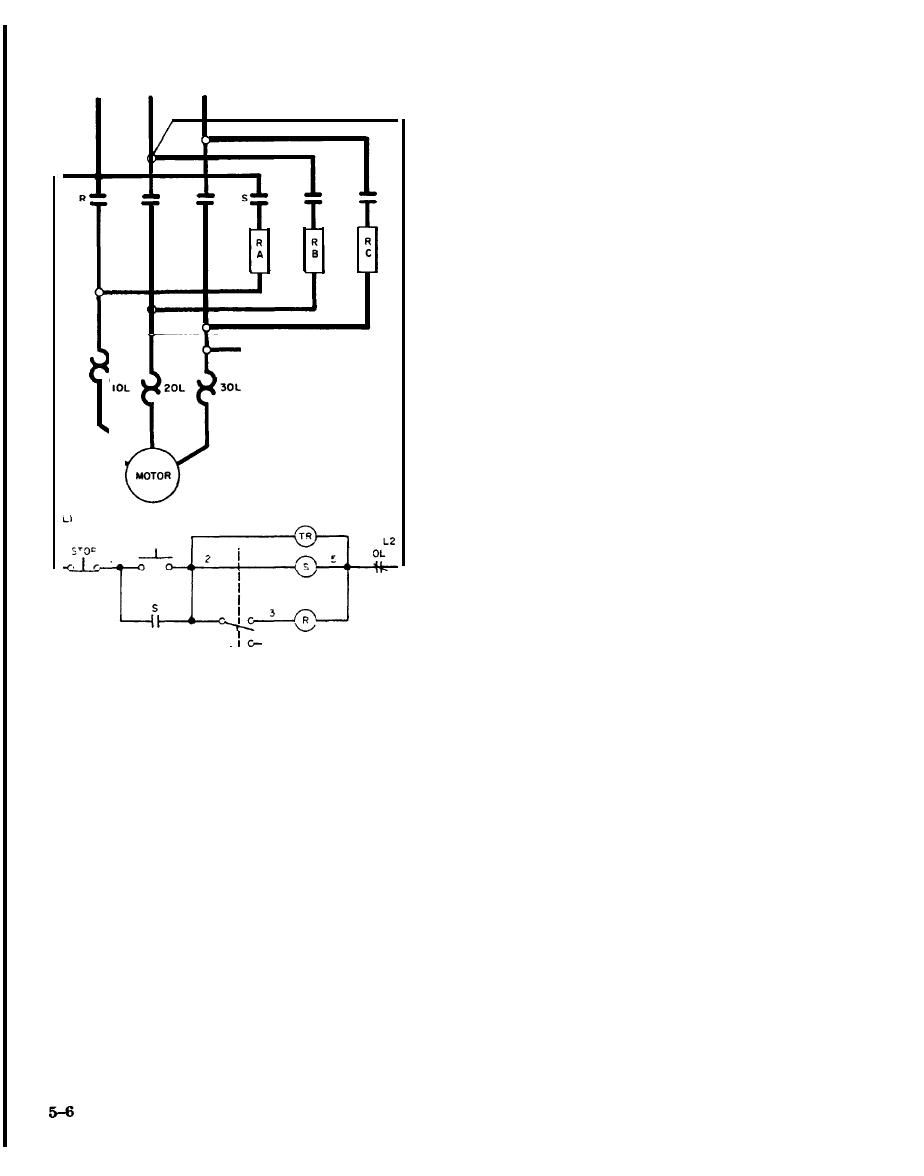

Custom Search
|
|

|
||
 TM 5-683/NAVFAC MO-116/AFJMAN 32-1083
cussed. Specialized guidance is required to install
L3
L2
L1
and maintain this equipment. Consequently, the
manufacturer's diagrams and instructions should
be obtained and kept readily available.
g. Adjustable speed/frequency starters. AC ad-
justable speed operation is obtained by converting
the fixed frequency AC line power into an adjust-
able voltage and frequency output which operates
the AC motor at the desired speed. The input AC
power is converted to adjustable DC voltage by a
solid-state converter module. The DC power is then
converted by the inverter to produce AC output
power at an adjustable frequency and voltage suit-
able for operating either conventional AC induction
motors or synchronous motors. Since the speed of an
AC motor is a function of the applied frequency,
accurate speed control is readily provided. These
systems are complex and may induce harmonics on
the electrical system which may, in turn, disrupt the
operation of nearby equipment. Maintenance
should be performed by personnel experienced with
solid-state drives and controls.
h. Miscellaneous types. Other terms used to de-
scribe motor controls include the following:
(1) Reversing starter. A motor that can be oper-
ated in either a clockwise or counterclockwise direc-
tion.
(2) Motor control center is the term given to a
grouping of motor starters within a large enclosure
(fig 5-9). The centers are used where several motors
are to be operated from a single location. The start-
ers themselves may be magnetic across-the-line
starters or other types. A typical use would be in a
boiler control room where the various fan, pump,
NOMENCLATURE
conveyer, and other motors serving the boiler are all
controlled from a central location.
S
START
CONTACTOR
R RUN CONTACTOR
RA,RB,RC RESISTORS
5-3. Components and maintenance of motor
TR PNEUMATIC TIMER
controls.
OL OVERLOAD RELAY
Control equipment should be inspected and serviced
Figure 5-6. Resistance starter.
simultaneously with the motors. As a general rule,
overhaul procedures for control equipment are less
voltage produces reduced torque which means a
involved than motor overhauling. Most repairs can
slow, controlled acceleration. Typical applications
be made on-site. Motor starters represent one area
that require lower controlled starting torques are
in which simplicity of construction and wiring has
large pumps, compressors, and heavy material han-
been emphasized by the manufacturers. Improve-
dling conveyors.
ments have resulted in starters that are simple to
e. Two-speed starters. This circuit allows a motor
install, maintain and operate. Connections are
to be started at low speed before running it at high
readily accessible, some parts are of plug-in type
speed. Resistors might be utilized to provide a
and may be easily replaced. Coils are often encap-
reduced-voltage start or a separate, lower line volt-
sulated in epoxy compounds and are less likely to
age may be available for low speed operation.
burn out. Practically all newer starters have provi-
f. Starters and speed regulators for AC wound
sions for adding several auxiliary contacts with very
rotor and DC motors. This equipment is much more
little effort. Spare parts for starters are usually
complex than the starting devices previously dis-
available from local suppliers. Spare starters, as
|
 
|
|
 |
||